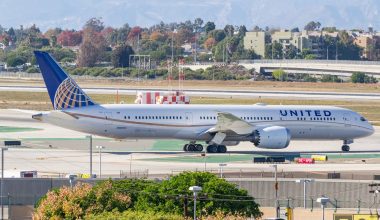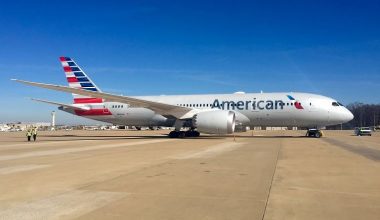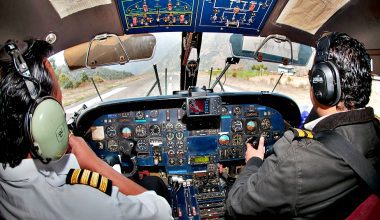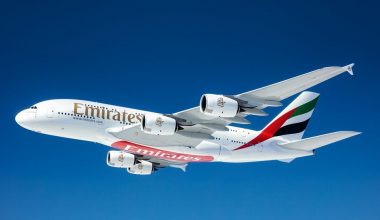The Vought F7U Cutlass carrier-based jet fighter of the US Navy was a tailless-swept wing warplane with an impressive bomb load, and solid reload speed. It was developed earlier in the Cold War era. In the Cold War period, the Vought F7U Cutlass was an impeccable aircraft to carry fighter bomber torch. The aircraft was created as Vought’s entry to the US Navy 1945-day fighter design competition, where several designs were based on aerodynamic data from numerous experimental jet fighters in Nazi Germany. This naval multirole fighter commenced its maiden flight on September 29, 1948, and first came into US Navy service in July 1951. But F7U had a short service carrier as the last plane retired on March 2, 1959.
F7U had the most radical design that stunned the public and looked very futuristic for 1952. This massive aircraft carried guns+4 sparrow missiles. One of the most unusual designs with tailless production and use of afterburners turned a lot of heads and led to a promising start at the beginning.

The Navy was in need of fast interceptors so that they could shoot Soviet bombers from an alert deck launch before they came close enough for a nuke to damage the carrier group. F7U was a radical departure without any tail. Navy officials required fighter planes that could fly at 40000 feet at the speed of 600 miles per hour.
Chance Vought commenced designing a day-fighter jet denying German links at a time a few weeks before the end of horrible World War II. The design starred broad chord, hydraulically powered controls, slats, low aspect ratio swept wings, avant-garde nose landing gear struts that lifted the pilot’s seat 14 feet into the air.
The tailless fighter had a promising ability to go faster and reduce drag force. It had vast and swept wings covering a total area of 496 sq. meters from leading to the trailing edge. The landing gear was very long and had a high angle of attack takeoffs. The plane was fitted with a hydraulic system producing twice the pressure generated by other naval aircraft, i.e., 3000 pounds per square. The hydraulic flight control equipped in the aircraft with built-in ‘artificial feel’ could provide artificial feedback to the pilot to feel aerodynamic forces acting on the plane. The test flight of F7U didn’t encounter serious problems, and one of the prototypes even had an impressive result with a maximum speed of 625 miles per hour. The plane was armed with four 200mm cannons capable of carrying two 2000-pound on the inner and 1000 pounds on the outer pylon, demonstrating its strength to haul weight in ordnance for ground-attack missions. Cutlass F7U was a stable gunfire platform and had an exceptional roll rate.
F7U-1 variant
F7U-1 variant was built between 1950 and 1952. All total 14 F7U-1s produced couldn’t make it to the squadron services as there were many shortcomings. Feightner and Macknight were the users of F7U Cutlass, and they suffered frequent aircraft problems. The hydraulic system was not mature at the time due to constant leaking and power loss, pressure loss making it unreliable to prepare for frontline services. Underpowered by Westinghouse J34 turboprops, F7U often endured engine failure to produce the power expected of them.
Sometimes the landing gear failures due to high stresses of barrier engagement and imposed side-loads would cause the pilot spinal injuries. The other failures included inflight engine fires, failure in the hydraulic system, falling of landing gear door pieces, and so on. The radar nose wasn’t slanted downward, so there was no sufficient carrier landing visibility.

In order to alleviate the shortcomings of F7U-1, the F7U-3 version came into the scene in 1951, with the first flight on December 12, 1951. Allison J-35 engines powered the early production aircraft without an afterburner. The J-35 engines didn’t give sufficient thrust leading to notoriously poor landing and takeoffs. It was vulnerable to rain as it would flame out, causing serious hurdles. So, F7U-3 equipped Westinghouse J-46 engines with afterburner downrated by Navy to 3960 pounds military thrust and featured a strong, sturdy airframe, safety improvements, and extra maintenance panel for service access. Basic improvements were made in the area of visibility, armament, range, and structure for F7U-3s. The aircraft had a roll rate of 570 degrees that outperformed the most production jets at that time.
F7U-3 proved to be better Cutlass aircraft in many ways. Test pilots praised a stable bombing platform, fun to fly, and long, thick, sturdy airframe. It could carry a removable rocket pack on the belly of its fuselage while attaching 2000 pounds per pylon under each inboard wing. Venting changes were adopted in this Cutlass to prevent engine flameout in the event of gunfire.
Major shortcomings of F7U
- The tailless design of F7U precludes flaps due to which it had high landing speed, accelerated by the swept wings.
- The good design of F7U got ruined by the bad execution and engines that never produced predicted power output. The high landing speed could somehow be managed with more efficient and powerful engines.
- The aircraft was nicknamed as ‘Gutless Cutlass’ owing to its troubled nature. Other several problems include leaks crippling the aircraft, failure of drag link brace in nose landing gear, post-stall gyrations of F7U.
Other variants of F7U aircraft
- F7U-2
F7U-2 couldn’t be the definitive productive version with more powerful engines. Although production orders were placed for refined versions suggested by the tests of F7U-1, F7U-2 couldn’t be produced due to the development barrier with the powerplant. So, it was just a proposed version, and all 88 orders for it were canceled.
- F7U-3P
It was a photo-reconnaissance F7U aircraft which was only utilized for research and evaluation purposes. None of the 12 aircraft built were deployed for operational services. It featured 25 inches long nose and photo flash cartridges.
- F7U-3M
The M represents missile capable version. It had 2 Westinghouse J46-WE-8B after-burning turbojet engines that could fly at the maximum speed of 697 miles per hour. Its armament capability included 4x20mm Cannon guns, 4 AAM-N-2 Sparrow I air-to-air missiles.
- A2U-1
The Navy canceled the order for A2U-1 aircraft due to the unavailability of suitable engines for an attack version of a twin-jet Cutlass fighter. Delay in the development of engines for A2U-1 led to the cancellation of the A2U-1 program on November 19, 1954.
Other characteristics of F7U Cutlass
The F7U Cutlass aircraft was fitted with technology to arm nuclear weapons in flight as Cold war tensions were on the rise during the 1950s. The landing gear struts delivered enough ground clearances to carry several bomb sizes. It would release the weapon during ground-level half-loop delivery or during vertical dive commencing at the air level. It seemed to fly at high speed, demonstrating to hold great potential for supersonic flights.
Armament and ordnance capabilities were the sole and entire basis for F7U’s being. Anemic engines, poor carrier landing and takeoff performance, several technical and handling problems, and accidents of over one-quarter of built jets signaled its death knell. F7U emerges fear and trepidation among the operators as the Cutlass recorded the highest accident rate of all Navy swept-wing aircraft.

One F7U bounced onto the USS Hancock. Vought F7U-3 suffered a series of unsuccessful landings and had a potentially deadly nose-wheel design. In August 1956, F7U Cutlass crashed in flames shortly after takeoff in an undeveloped area near W H Burges High School. The aircraft was damaged beyond repair, along with the death of the pilot in the crash.
Similarly, in July 1955, A Vought F7U-3 Cutlass broke up and burst into flames as it had suffered a ramp strike on landing abroad USS Hancock, off California, resulting in the death of 1 crew. Plagued by numerous issues, the type was involved in 78 accidents and killed a total of 4 test pilots and 21 other US Navy pilots.
F7U Cutlass in present time
Major F7U aircraft were recycled soon after they were retired, and only 7 F7U-3 Cutlass aircraft are known to survive at different places of the world for repair. Unfortunately, none of the sleek futuristic F7U-1 aircraft exist in museums. One F7U-3 prototype is slated for display at USS Midway Museum, awaiting cosmetic restoration. The other aircraft’s components are stored in F7U’s historian Al Casby.
In 2021late summer, MAPS Air Museum received ‘Cutlass’ from Walter Soplata Aviation Collection, which it will get to renovate this year.
Bottom line
F7U, the early jet age aircraft, had so much promise to take Navy fighter planes to the next level. Had the aircraft not been notoriously underpowered, they could last many years in service. Undoubtedly, the F7U is one of the most beautifully futuristic and disputed Navy aircraft of the era after World War II. If it had got enough attention and power it needed, it could last in navel service and perhaps Airforce service. At the end of WWII, the revolutionary change is Chance Vought F7U ‘Cutlass’ series of US Navy carrier fighters. Vought fighter F8U/F-8 Crusader eventually replaced the F7U aircraft.
F7U was arguably way ahead of its time and has made a place in naval aviation history despite its engine and aerodynamic issues.






